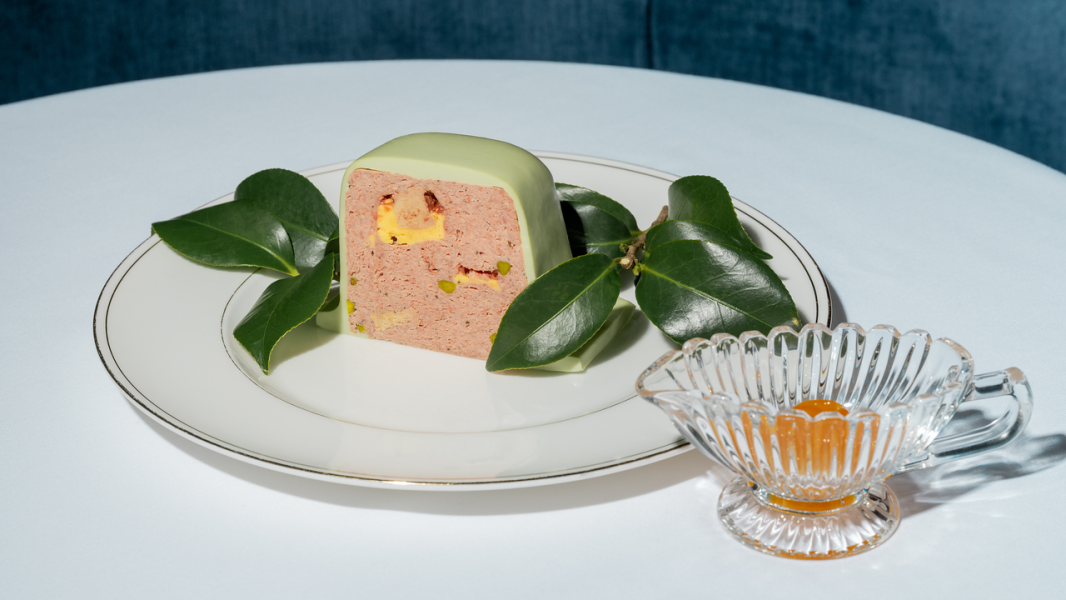
Save this storySave this storySave this storySave this storyYou’re reading the Food Scene newsletter, Helen Rosner’s guide to what, where, and how to eat. Sign up to receive it in your in-box.
Diners are enveloped in velvet at the West Village restaurant Le B., both literally (velvet banquettes, velvet barstools) and in a more abstract sense. The service is gentle, the courses unfurl at an adagio-like pace. Even the very air of the restaurant seems to have a lushness to it, though that might just be wafts of browning butter from a nearby tableside steak flambé. The restaurant, operated by the veteran New York chef Angie Mar, was until a few months ago Les Trois Chevaux, Mar’s homage to the mid-century French haute cuisine of places past like Lutèce and La Côte Basque. With a pricey prix-fixe menu and a jackets-required dress code, Les Trois Chevaux drew a well-heeled uptown crowd. (Its closure, last September, came with a promise that Mar would reopen it soon on the Upper East Side, the home turf of many of its regulars, though no such spot has yet materialized.) In the West Village, the physical space has hardly changed—there’s still the gilded bar mirror, the curtained alcoves, the Picasso and Banksy art on the walls—but Mar has taken some pains to differentiate Le B. from its predecessor, rinsing out much of the starch with a coat of dark-blue paint on the walls and a more modern centerpiece chandelier (salvaged from Brooklyn’s legendary Grand Prospect Hall). The menu is more approachable, and there’s a burger at the bar that harks back to the sumptuous carnivorousness of Mar’s restaurant before last, the Beatrice Inn, an over-the-top basement-level chophouse.
Le B.
283 W. 12th St.
(Dishes $12-$210.)
Still, it wouldn’t be a Mar joint if the restaurant didn’t have some essential element of hauteur; Le B. may be her bid for a more downtown vibe, but that doesn’t mean that things skew to the proletarian. Tables are set with silver. A mahogany cheese cart rolls around the room, and the formidably curated wine list reads like a French vocabulary lesson. Nearly every dish incorporates luxury ingredients, though they generally show up as supporting players: foie-gras drippings in a creamy onion dip, or an earthy whiff of white truffle in a garlic-cream soup. At times, this can feel a bit like opulence theatre, rather than actual opulence—a black-truffle-flecked gelée, draped over a devilled egg en chemise, tasted like nothing much at all, least of all truffles—but when it works, my God, it works. A heavenly first course identified as Liver & Onions involved braised lentilles du Puy, toothsome and outrageously savory, topped with a sliver of nearly melting foie gras, which gracefully balanced the intensity of the brothy legumes with its slippery, ferric sweetness. A server explained that the dish is Mar’s tribute to her father’s favorite meal during his time serving in the U.S. Navy, but I can’t imagine that mess-hall eating rose quite to this level.
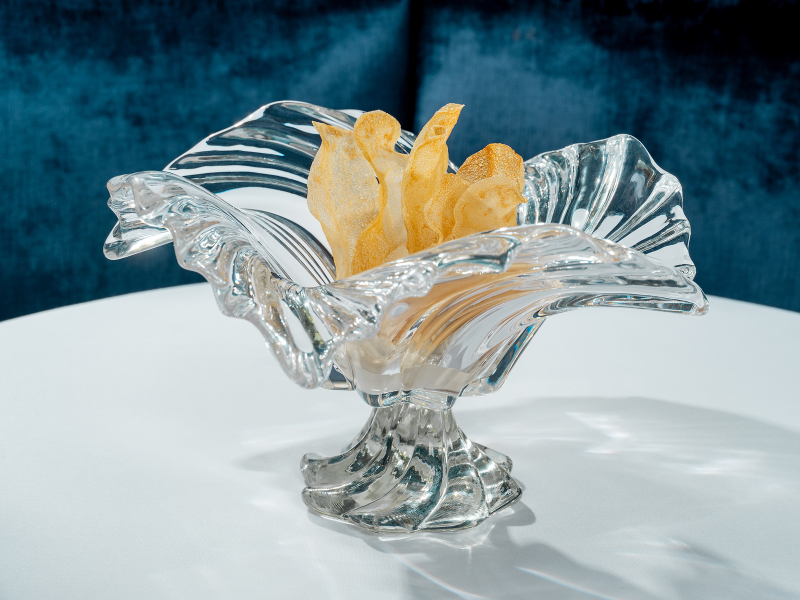
An onion-dip appetizer, made with foie-gras drippings.
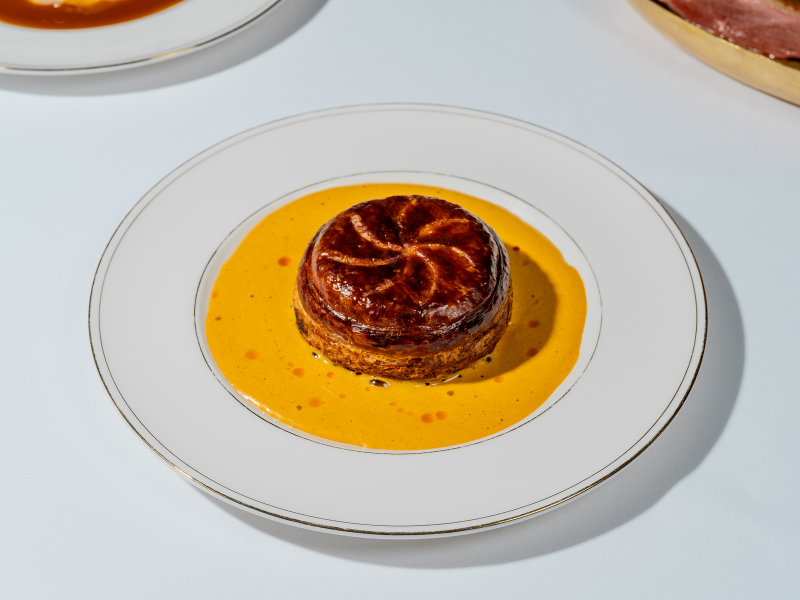
The pastry on a Dungeness-crab Wellington is crisp and buttery.
Other dishes were similarly transcendent: a slab of duck breast was tender and rare, with crisp skin and a dazzling swash of orange sauce. A classic-seeming presentation of butter-poached lobster, scallops, and oysters was thrillingly perfumed with leeks and studded with salmon roe, which popped like briny candy in each bite. A tennis-ball-green pistachio chaudfroid wraps a slice of creamy pork-and-duck terrine. A delicate-looking double lamb chop, served deboned and split, turned out to be ferociously dark and gamy. The roasted bones from which it had been carved were presented separately, on a swirled-glass plate, for discreet gnawing—a sensual vulgarity, like a whiff of civet in a rose-garden perfume. But some menu items seemed to rely too much on cleverness, which is never the most secure foundation for a meal. A course enticingly titled A Rabbit & His Wealth is a hash of rabbit meat with carrots and celery, wrapped up in a celadon leaf of Savoy cabbage and scented with camomile. It was witty—even the plating resembled an enormous camomile flower—but no amount of humor could make up for its lack of flavor. The bronze-dark pastry encasing a Dungeness-crab Wellington was gloriously crisp and buttery, but it overwhelmed the delicate taste of the crustacean inside. Mar has a reverence for grand old Continental techniques, whose visual flourish and subtle palate could, I imagine, bring the house down at the fussier, stuffier, more oligarchic Les Trois Chevaux, but such restraint too easily gets lost against Le B.’s vivacity and drama, which includes a soundtrack of hip-hop and bossa nova. The dessert menu, too, seems curiously out of synch. What’s available is quite lovely: a basket of tender, fresh-baked madeleines; butter-drenched crêpes Suzette theatrically flambéed tableside; a selection of excellent ice creams, including an obscenely silky chocolate sorbet that conjures memories of licking frosting straight from the bowl. But eating a meal of such technical ambition without an haute-pâtisserie finale feels a bit like hearing a melody without the resolving chord.
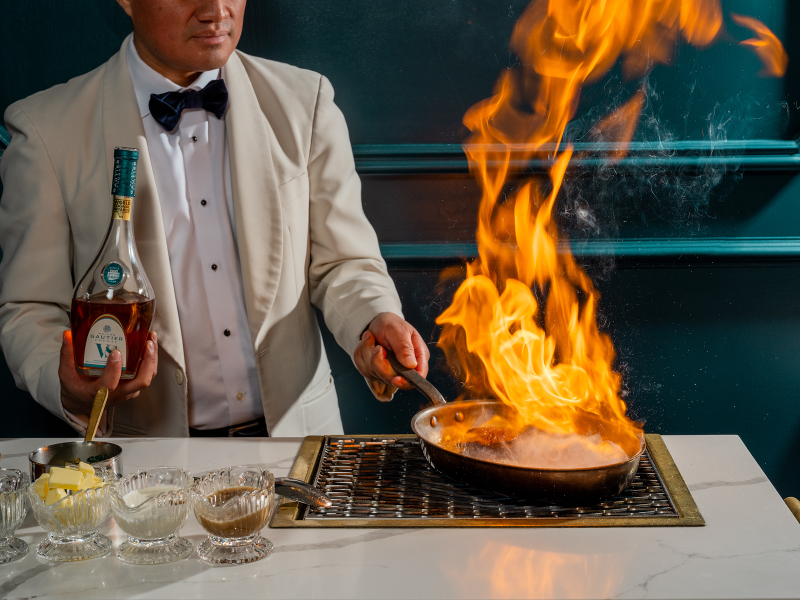
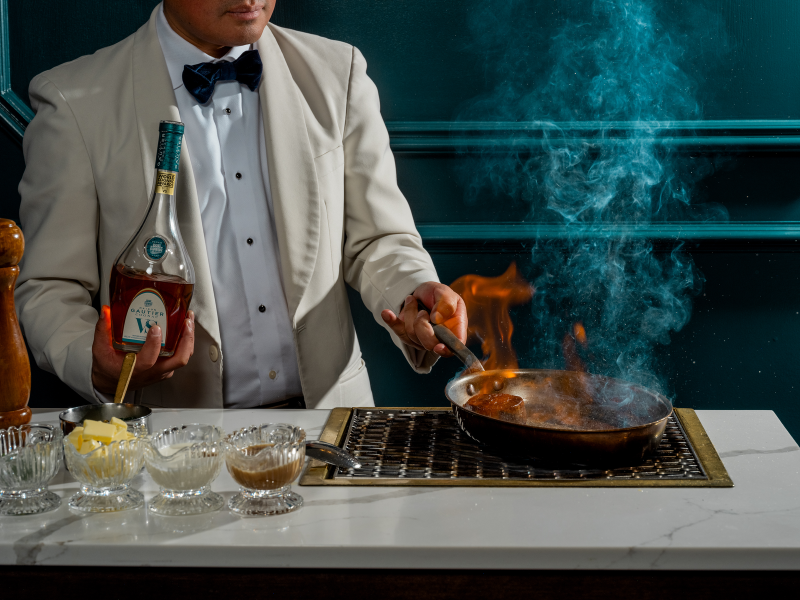
There’s a theatricality to a Le B. meal, including steaks flambéed tableside.
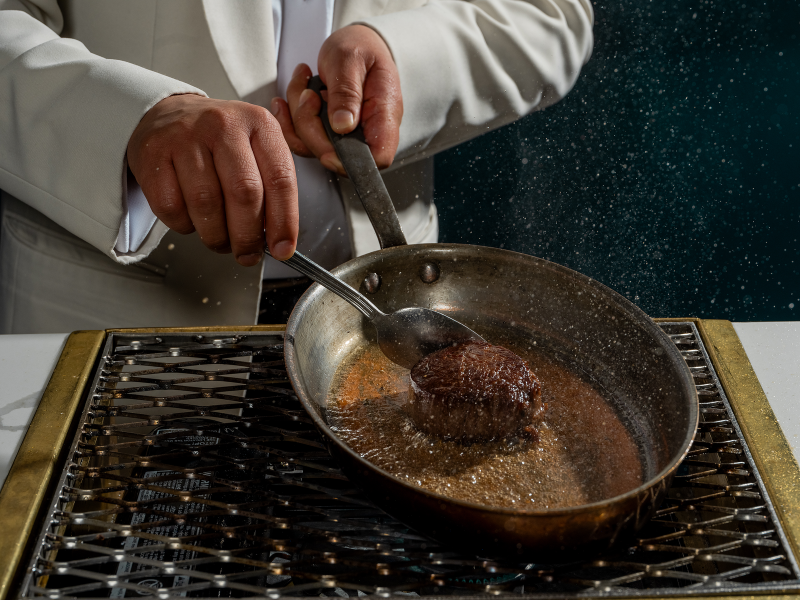
Mar, who was born in Seattle, is Chinese American, and, for all of her evident Francophilia, she threads her menu at Le B. with references to her heritage, as well as to its historical interpretations. Her cooking feels most assured, most alive, when she’s playing in the space between Chinese and chinoiserie, as in a white-peppery take on bird’s nest soup, or a sweetly tannic oolong glacé. The dish I was most excited to try was what Mar calls her Salad “Chinoise,” a take on that ubiquitous mid-tier-restaurant assemblage often called Chinese chicken salad: a mix of greens, canned mandarin segments, and crispy noodles in a sesame dressing. The dish likely originated in the nineteen-sixties by the Chinese-born chef Sylvia Cheng Wu, of Los Angeles’s celebrity hot spot Madame Wu’s Garden, and rocketed to mass-culture status with the help of the Austrian chef Wolfgang Puck, who put a version of it on the menu at his L.A. restaurant Chinois on Main, at the height of the eighties Asian-fusion craze. The salad has, in some circles, become shorthand for a certain strain of culinary whitewashing—it is neither authentically nor coherently Chinese. Its components combine into what the journalist Bonnie Tsui has described as “non-Asian-Americans . . . making up their own version of Asianness.”
Helen, Help Me!
E-mail your questions about dining, eating, and anything food-related, and Helen may respond in a future newsletter.
It’s no wonder that such a dish would be irresistible to Mar, and her version of Chinese chicken salad is perhaps the best thing on Le B.’s menu. A stark green pile of baby lettuce leaves is punctuated by brilliant magenta orchid petals, peppery and tender. A bit of fresh tarragon is draped over the top, along with near-translucent ribbons of carrot and radish, but the action of the dish takes place in the dressing. It’s made with fresh satsuma juice and a bit of heat that blossoms on the tongue, plus the symphonic combination that’s instantly familiar to anyone who’s ever eaten lunch at a shopping mall: a slick of toasty sesame oil, a vivid slash of ginger. The whole thing is topped with a crackling, golden tuile made from chicken drippings—a nod to the crisp noodles, the tender meat, both and neither. The dish is bold and zingy, French and Chinese at once, but mostly it’s Mar’s own creation. It takes vision to pull off something like this, both a reclamation and a subversion, especially without sacrificing even an ounce of glamour. ♦
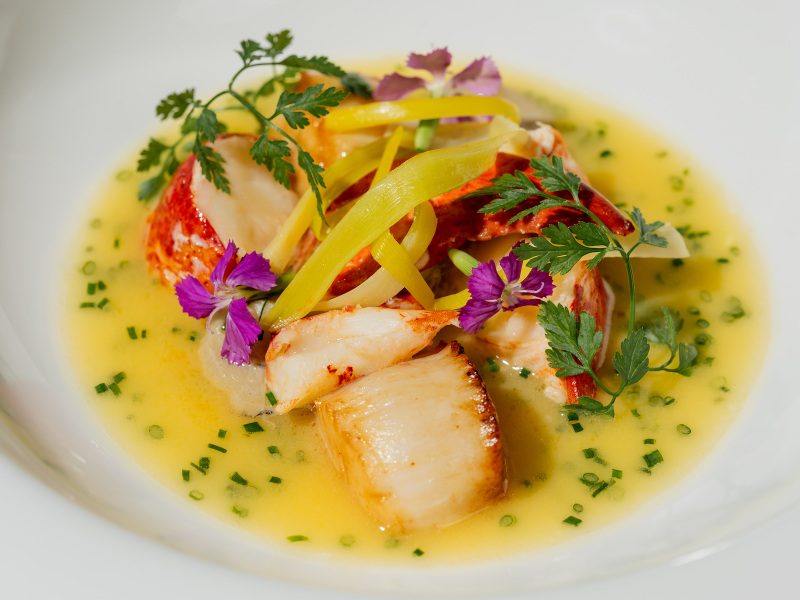
The classic Continental menu includes dishes like butter-poached seafood.
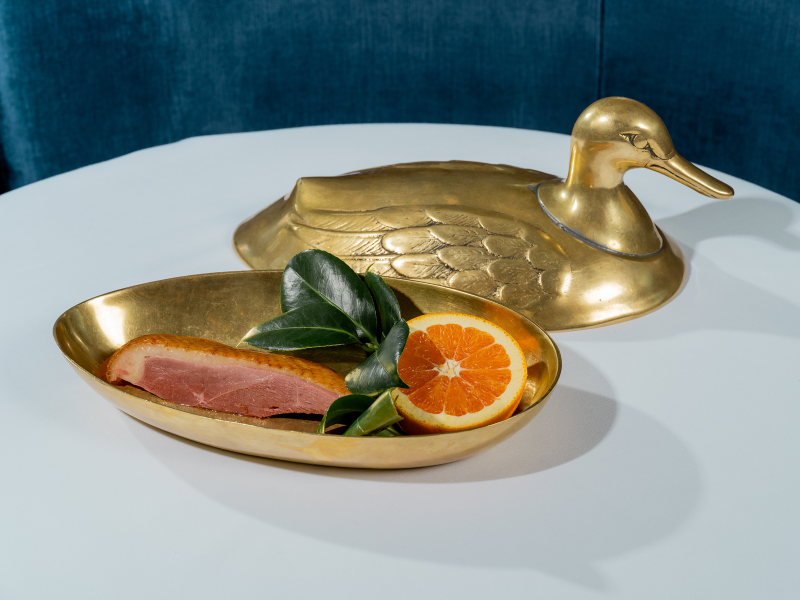
Crisp-skinned duck breast is presented to diners in a duck-shaped vessel.
Sourse: newyorker.com